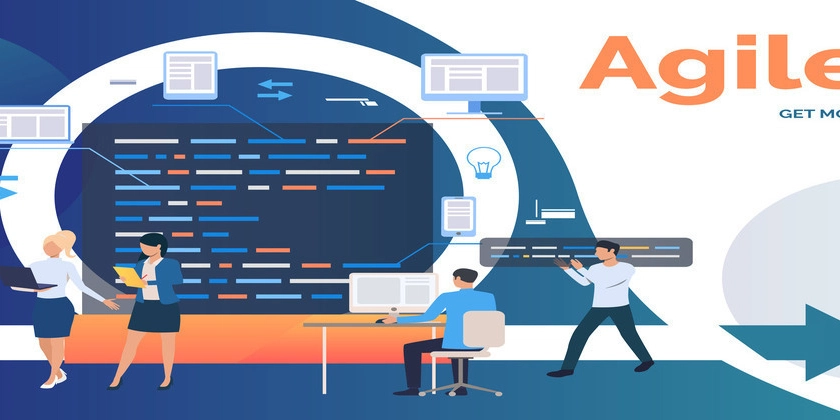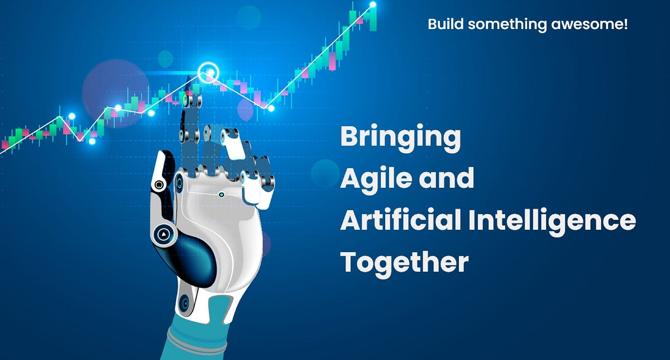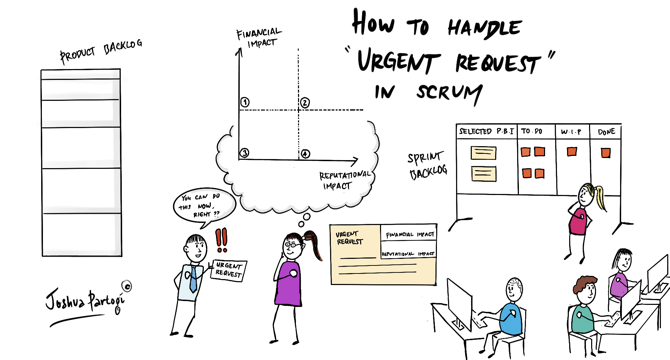Agile Methodology News
Medium
405

Image Credit: Medium
10 Principles of Software Estimation
- Estimation is one of the most difficult activities in software development due to uncertainties and changing requirements.
- Accurate estimation is critical as it impacts planning and customer expectations.
- Using only technological skills for estimation can lead to underestimation and increased workload.
- The article presents 10 principles of software estimation to improve accuracy and save time.
Read Full Article
24 Likes
Scrum-Master-Toolbox
400

Global Agile Summit Preview: Unifying Strategy, Discovery, and Delivery in Product Development With Roman Pichler
- The concept of product discovery emerged as a reaction to teams being overly focused on outputs rather than outcomes.
- Separating strategy, discovery, and delivery into distinct activities or teams can lead to barriers and hinder product development.
- Roman Pichler emphasizes the importance of integrating strategy, discovery, and delivery as parallel work streams that inform each other.
- Collaboration and teamwork are crucial for successfully integrating strategy, discovery, and delivery in product development.
- Forming an extended product team with key business stakeholders can ensure holistic ownership of product strategy.
- Practical implementation involves holding regular meetings like quarterly strategy workshops and involving the extended product team in operational meetings.
- Linear, sequential thinking in the software industry can lead to problems being discovered too late in the product development process.
- Global Agile Summit 2025 in Tallinn offers a platform to connect with Agile leaders and learn practical strategies for success.
- Roman Pichler, a renowned product management expert, advocates for an integrated approach to product strategy, discovery, and delivery.
- Roman Pichler has nearly 20 years of experience coaching product managers and sharing insights through various platforms.
Read Full Article
24 Likes
Testim.io
0

Image Credit: Testim.io
Unit Testing Best Practices: 9 to Ensure You Do It Right
- Unit testing is a valuable type of automated testing that exercises small parts of an application in complete isolation.
- Unit tests are essential for finding and fixing bugs early, acting as a safety net for developers, and contributing to higher code quality.
- Unit tests also help detect code smells, contribute to better application architecture, and act as documentation.
- Unit tests provide fast and precise feedback, unlike other types of testing like end-to-end testing, which offer more realistic feedback.
- Unit tests should be fast, simple, readable, deterministic, and ideally part of the build process.
- It's crucial to understand the difference between unit tests and integration tests, and to ensure testable code by avoiding enemies of testability.
- Best practices for unit testing include ensuring tests are fast, simple, and do not duplicate implementation logic.
- Tests should be readable, deterministic, part of the build process, and should use test doubles appropriately.
- Adopting a sound naming convention for tests and avoiding coupling tests with implementation details are also crucial best practices.
- Unit testing is essential in all programming languages, and following unit testing best practices can help avoid common pitfalls and make the process easier and more effective.
- Unit testing, when done right by following best practices, can greatly improve app health and overall code quality.
Read Full Article
Like
Medium
319

Image Credit: Medium
Agile is Failing — But Not for the Reason You Think
- Agile's incremental approach can lead to developers working in silos and detached from the bigger picture.
- Agile has become an excuse to delay decisions, resulting in chaos, wasted resources, and lack of direction.
- Agile should not be used as an excuse to ignore the full picture; understanding what you're building is crucial.
- Real-time collaboration between tech and business teams is vital for Agile to be successful.
Read Full Article
19 Likes
Discover more
- Programming News
- Software News
- Web Design
- Devops News
- Open Source News
- Databases
- Cloud News
- Product Management News
- Operating Systems News
- Computer Engineering
- Startup News
- Cryptocurrency News
- Technology News
- Blockchain News
- Data Science News
- AR News
- Apple News
- Cyber Security News
- Leadership News
- Gaming News
- Automobiles News
Scrum
211

Image Credit: Scrum
The Game-Changing Power of Purpose
- Netflix's success is attributed to having a clear purpose, unlike Blockbuster which focused on short-term profits.
- Having a clear purpose in personal leadership leads to greater fulfillment and career alignment.
- Successful products are driven by a purpose that solves real problems, such as Apple's focus on seamless technology.
- Organizations with a clear purpose, like Amazon, thrive and adapt to new market realities.
Read Full Article
12 Likes
Scrum
220

Image Credit: Scrum
The Scrum Master Role is Misunderstood
- The role of the Scrum Master is often misunderstood.
- Early adopters of Scrum were experienced professionals with a background in software engineering and mentoring.
- Many job descriptions for Scrum Masters require only 2-3 years of experience, leading to a systemic misunderstanding of the role.
- Scrum Masters should embody the values of Scrum and have the ability to negotiate organizational change.
Read Full Article
13 Likes
Scrum
0

Image Credit: Scrum
Can AI Generate High-Quality Code?
- AI-generated code functions but often lacks structure and clarity, requiring Test-Driven Development (TDD) for improvement.
- The experiment showed that AI can produce functional code, but using TDD significantly enhanced its quality.
- Initial observations revealed that AI-generated code was challenging to debug and comprehend due to its monolithic structure.
- The AI's code lacked clean, maintainable practices common in TDD-based development.
- Implementing TDD led to the AI producing better-structured code with reduced complexity.
- AI followed TDD steps but showed hesitancy in refactoring without tests and lacked software craftsmanship principles.
- The experiment highlighted the importance of human oversight, test validation, and quality principles in building high-quality code.
- While AI can assist in code generation, human expertise is crucial for ensuring the creation of scalable and adaptable software.
- TDD isn't just about tests, it's about designing better software through small, incremental steps.
- AI can accelerate the journey towards high-quality products, but it still requires human judgment and expertise for optimal outcomes.
Read Full Article
Like
Dev
144

Image Credit: Dev
Agile vs. Waterfall: Which Software Development Methodology is Right for You?
- Agile vs. Waterfall is a crucial decision for software projects, impacting time, money, and team collaboration.
- Waterfall is a traditional, structured software development methodology with clear phases: requirements, design, coding, testing, deployment, and support.
- Advantages of Waterfall include a fixed plan and easy progress measurement, but it lacks flexibility for changes and late problem identification.
- Agile, a modern methodology, focuses on iterative work cycles, quick adaptability, teamwork, and client feedback.
- Key elements of Agile include short work periods, frequent planning meetings, daily check-ins, and continuous improvement.
- Agile allows quick changes, early issue identification, and regular client progress updates, but requires constant client input and may face scope creep.
- Agile and Waterfall differ in flexibility, planning approach, adaptability to change, and client involvement.
- Factors like project size, client requirements, team dynamics, time-to-market needs, and regulatory constraints influence the choice between Agile and Waterfall.
- Real-world case studies demonstrate Waterfall's suitability for structured projects and Agile's effectiveness for fast-changing environments.
- Ultimately, the best methodology depends on project specifics, team capabilities, and client expectations.
Read Full Article
8 Likes
Medium
315

Image Credit: Medium
Scrum Masters Don’t Need to Be Technical — They Need to Be Product-Savvy!
- The debate over whether Scrum Masters need technical skills stems from the increasing demand for these roles in Agile environments.
- Historically, many non-IT professionals transitioned into Scrum Master roles, lacking technical expertise.
- Teams began facing challenges when Scrum Masters couldn't provide support due to their limited technical knowledge.
- Modern software development emphasizes the importance of technical understanding for Scrum Masters.
- Scrum Masters need to support teams in using tools like version control systems, automated testing, and DevOps processes.
- The effectiveness of a Scrum Master depends on their ability to understand the specific context of the team's work.
- Technical expertise is not the only requirement for a Scrum Master; understanding the team's domain is equally crucial.
- A Scrum Master must have a basic grasp of the team's work to effectively facilitate process improvements.
- The key is for Scrum Masters to comprehend the fundamentals of the problem their team is addressing.
- Flexibility and adaptability in understanding various domains are essential traits for a successful Scrum Master.
Read Full Article
18 Likes
Hackernoon
135

Image Credit: Hackernoon
Agile is Chaos. But There’s a Way Through.
- Agile can feel chaotic when drowning in backlog tickets and arguments over features, but techniques can help maintain control.
- User Story Mapping emphasizes understanding the user journey, prioritizing, and building useful products from the user's perspective.
- Naming user personas can help focus discussions on user needs, leading to more effective decision-making in Agile projects.
- Backlog Refinement is essential to manage overwhelming ticket numbers, ensuring clarity, and streamlining sprint planning.
- Regular refinement sessions, deleting unnecessary tickets, and detailing stories improve backlog management and save time.
- Agile Workshops with clear goals, active participation, and immediate decision summaries can align teams efficiently and save time.
- Well-conducted workshops can facilitate team alignment on significant work in a short time, enhancing productivity.
- Agile is about flexibility and delivering value, not just following rules, with techniques like mapping, refinement, and workshops aiding in control.
- Embracing the messiness of Agile and focusing on making things work rather than perfect is crucial for project success.
- Mastering techniques like User Story Mapping, Backlog Refinement, and Agile Workshops can shift the perspective from reacting to chaos to leading the process.
Read Full Article
8 Likes
Scrum-Master-Toolbox
0

Global Agile Summit Preview: How to Measure and Visualize Software Improvement for Actionable Results with Mooly Beeri
- In a preview of the Global Agile Summit, Mooly Beeri discusses measuring and visualizing software improvement for actionable results.
- Beeri's data-driven approach helps teams focus improvement efforts and quantify progress over time.
- Visualizations like heat maps offer insight into software craftsmanship across the entire development lifecycle.
- Creating a common language of improvement empowers teams and informs strategic decisions.
- Measuring code review effectiveness with concepts like 'code review escapes' guides investment decisions.
- Balancing team autonomy with organizational alignment, Beeri's model allows teams flexibility in improvement paths.
- Adapting to different industry contexts, the framework maintains flexibility while providing meaningful measurements.
- Starting with concrete metrics aids in prioritization and calculating return on investment for improvement efforts.
- Join the Global Agile Summit in 2025 for real-world Agile success stories and practical strategies.
- Mooly Beeri, a software transformation expert, focuses on visualizing and optimizing software development lifecycles.
Read Full Article
Like
Medium
209

Image Credit: Medium
AI and Agile Project Management: A Game-Changing Synergy for the Future
- AI is reshaping Agile Project Management, enabling smarter and more efficient project execution.
- AI-powered backlog prioritization and sprint planning automate the process and suggest high-value features to work on first.
- Predictive analytics help identify potential project risks before they happen, enabling proactive adjustments.
- AI-driven retrospectives and automated stand-up meetings provide data-driven insights for process improvement.
Read Full Article
12 Likes
Medium
117
Image Credit: Medium
Your first 90 days as a Product Owner
- Establish trust with stakeholders by scheduling 1-on-1 meetings and demonstrating your understanding and skills.
- Position yourself as an enabler, supporting the success of your development team.
- Avoid micromanagement and keep developers focused to minimize distractions.
- Audit your product backlog and prioritize the most impactful items for your first 90 days.
Read Full Article
7 Likes
Medium
63

Image Credit: Medium
Avoiding Flow Metric Confusion: Aligning Agile Work Hierarchy to Flow Items
- Misinterpreting Agile work elements when modeling Flow Items is a common issue faced by organizations.
- The article provides guidance on aligning Agile work hierarchy to Flow Items and understanding Value Stream concepts.
- A Technology division struggled to map Jira Issue types to Flow Items due to a lack of understanding and adherence to industry guidelines.
- An Agile Work Hierarchy model is proposed to standardize project tracking tools and align with Flow Items effectively.
- Defining Flow Items correctly is crucial for Agile methodologies to ensure the delivery of value independently.
- Flow Items are identified as the smallest units of work that deliver meaningful value to the user or the business.
- The article emphasizes the importance of aligning Agile work elements with Flow Items to improve measurement and decision-making.
- OKRs play a significant role in aligning team work with customer needs and organizational objectives, encouraging a focus on value.
- Teams should define sprint goals based on outcomes rather than tasks to drive impactful results.
- Explicit alignment or cascading of higher-level key results into team objectives ensures clear alignment and purpose.
Read Full Article
3 Likes
Scrum
406

Image Credit: Scrum
How To Handle "Urgent Request" in Scrum
- In Scrum, Product Owners often face challenges with handling 'urgent requests,' especially from individuals with high political power.
- Scrum involves two backlogs: Product Backlog and Sprint Backlog, with the latter containing work the Developers have committed to for the current Sprint.
- It's crucial to differentiate between 'urgent requests' and defects or critical production incidents in Scrum.
- Not every 'urgent request' should be automatically added to the Sprint Backlog; some can wait and be stored in the Product Backlog for future consideration.
- As a Product Owner, consulting and involving the Developers in discussions about 'urgent requests' for the Sprint Backlog is essential to maintain collaboration and trust within the team.
- Assessing whether an 'urgent request' aligns with the Sprint Goal is a critical step for Product Owners to determine its urgency and impact.
- Using tools like the Financial Impact vs. Reputation Impact Matrix can help Product Owners quantify the urgency of 'urgent requests' based on their potential financial and reputational impacts.
- Quantifying the financial impact of an 'urgent request' in monetary terms and assessing the reputation impact can aid in prioritizing these requests effectively.
- In cases of high financial and reputational impacts, 'urgent requests' may be considered for inclusion in the Sprint Backlog after discussion with the Developers.
- Open communication, managing stakeholder expectations, and addressing the implications of adding 'urgent requests' to the Sprint Backlog are crucial aspects of handling such requests effectively.
Read Full Article
24 Likes
For uninterrupted reading, download the app